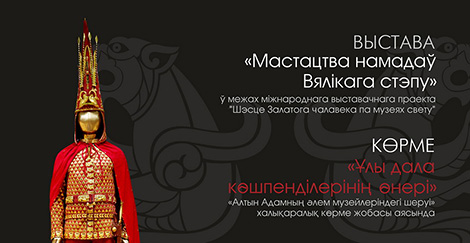Press releases
Belarus’ National Art Museum to showcase Scythian treasures
 MINSK, 22 November (BelTA) – The gold of Saka, a nomadic Scythian tribe, dating back from the 7th to 3rd centuries BC will go on display at the National Art Museum of Belarus, BelTA learned from the museum.
MINSK, 22 November (BelTA) – The gold of Saka, a nomadic Scythian tribe, dating back from the 7th to 3rd centuries BC will go on display at the National Art Museum of Belarus, BelTA learned from the museum.
The exhibition entitled “March of the Golden Man across the world” will open on 2 December. It features Saka’s gold of the Early Iron Age (7th to 3rd centuries BC).
In 1969, Kazakh archeologists headed by Kemal Akishev discovered a burial chamber of a Saka chieftain in the Issyk mound located 50km east of Almaty. The costume and the headdress have remained untouched. The chieftain’s dress was embellished with a complicated arrangement of plaquettes with images of animals, plants, and geometric shapes. All of them are considered to be pieces of art, specimen of the Scythian-Siberian feral style. The warrior buried in the mound was truly “golden”. Archaeologists have found a total of 4,800 jewels in the chamber. This is the second largest number of gold objects ever found in a tomb, trailing only Tutankhamun’s burial chamber.
Today, the Golden Man is well-known throughout the world as Kazakhstan’s symbol. From 1969 to 2013, Kazakh archaeologists discovered six Golden Men which make part of the cultural heritage of the Great Eurasian Steppe.
Another unique thing found in the mound is a small silver cup which has two lines of 26 runes engraved on it. Scientists have previously thought that a writing system appeared in Kazakhstan much later.
Over 40 years have passed since the Issyk mound was discovered. Several books and dozens of scientific articles have been published. Historians, archaeologists, culturologists, linguists, and art historians are still studying the find.
The exhibition also features crafts from the Berel mound of ancient nomads, which belonged to noble men and were made in the Scythian-Siberian feral style.
The exhibition will stay open till 28 December.
The project is meant to introduce a wide audience to the cultural heritage of the Great Eurasian Steppe of the Early Iron Age.







 print version
print version make home page
make home page add to bookmarks
add to bookmarks

